- Chapter Goals
- Understanding Perspective
- Using Photomerge Guided Edits
- Matching Color
- Adding Subjects in Grass
Understanding Perspective
Perhaps the most important consideration to make when compositing images is to have your photos in proper perspective. You might be able to get away with oversights in brightness, lighting, color, saturation, and so on. However, when you’re off with perspective, people squirm a little. They look at your photo, and although they might not be able to say what’s wrong with it, they just know things aren’t right.
There are many different types of perspective. You can have one-point angular perspective, two-point oblique perspective, and perspectives with three, four, five, and even six vanishing points. Once you get to three-point perspectives, things become a little confusing. For all intents and purposes, knowing all about one- and two-point perspectives is a good start and will handle most of your compositing needs.
Identifying the Horizon Line
One of the first things you want to do when editing photos is to look at the horizon line to determine if a photo needs some straightening with the Straighten tool. When you look for images you want to combine in a composite, first identify the horizon line. If the horizon line is high, it means the camera was on a low plane when the shot was taken. Conversely, if the horizon line is low, it means the camera was on a higher plane when the shot was taken.
Position of the horizon line has great impact on your ability to composite photos. If you need to position a subject very high or very low to maintain perspective, you may not be able to use photos you want to use in a composite.
It’s very easy to find the horizon line when you see the sky meeting the land (or water) in a photo. In other photos, you may need to search for the vanishing point to find the horizon line (see Figure 8.3).

FIGURE 8.3 When you identify the vanishing point, it’s easy to find the horizon line.
Visualizing Vanishing Points
Objects are shaped along a line in a photo toward the vanishing point. Where the opposing lines converge, you find the vanishing point (see Figure 8.4). At the vanishing point, you also find the horizon line.
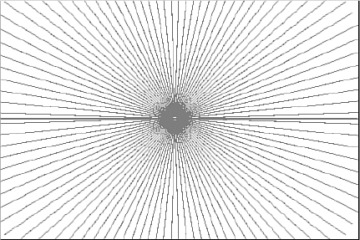
FIGURE 8.4 A one-point vanishing point.
If you’re standing in front of the horizon line and look ahead, a one-point vanishing point would be somewhere along the horizon line. If you look straight ahead at the vanishing point, you might see objects and buildings falling along lines similar to what you see in Figure 8.5.
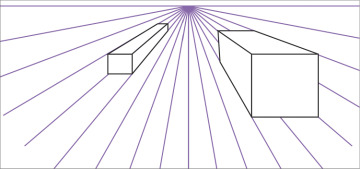
FIGURE 8.5 Parallel lines from objects converging at a vanishing point.
You can have more than one vanishing point in an image. A two-point vanishing point grid is shown in Figure 8.6. The parallel lines on two sides of an object converge at two different vanishing points.
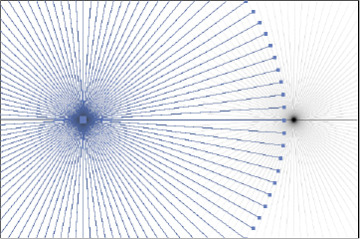
FIGURE 8.6 A two-point vanishing point grid.
Like one-point vanishing points, two-point vanishing points have parallel lines from two directions converging at the vanishing points. As shown in Figure 8.7, the objects have two sides with lines converging at two vanishing points.
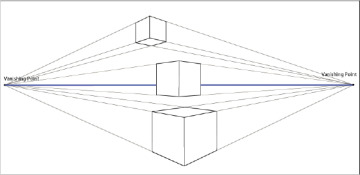
FIGURE 8.7 Objects with lines converging to form two vanishing points.
When compositing images, you want to know where the horizon line is in your images. When you have difficulty finding a horizon line, try to draw lines that converge to locate the horizon line.
Using Perspective When Compositing Images
When you have two images that you want to bring together on a single canvas, you start by creating a selection and Layer Mask on one or both images, depending on the content and what you want in your final photo. This example uses a Layer Mask on one image and brings it into the second image.
Finding the Horizon Lines
After you create a Layer Mask, find the horizon lines in both images. I’m starting with my photo with the mask. If you have a Layer Mask, press Shift and click on the mask to hide it. If the horizon line is easy to see, as shown in Figure 8.8, draw a line where you see the horizon line.
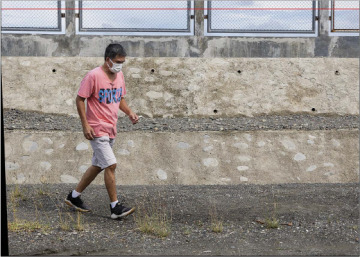
FIGURE 8.8 Locate the horizon line in the first image.
When you use the line tool, a new layer is automatically created. You can later dismiss the layer when adding the photo to another photo. Save this photo by choosing File > Save As and save the photo as a .psd file including layers and a new name before moving on.
Open the second image. In my example, Figure 8.10 is the target image where I’m creating the composite. Locate the horizon line in this image. In my example photo, the horizon line is not as easy to detect. I draw two lines along the base of the trees on either side of the photo. Where the lines converge is fairly close to the horizon line, as you can see in Figure 8.9. Each line creates a new layer. When you’re sure the lines are as you want them, hide all other layers and choose Merge Visible from the Layer panel menu. Only the line layers are merged. Show all layers and save the file as a .psd including layers.
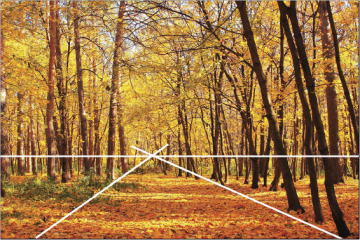
FIGURE 8.9 Locate the horizon line by drawing lines that converge at the horizon.
Placing Images
Next, you want to create a Smart Object from the file you’re importing into the final composite image.
Return to the first photo and hide all layers but the layer with the mask. Return to the composite target image and choose File > Place. When you place a photo in the Photo Editor, the file comes in as a Smart Object, which means you can scale the photo any number of times without destroying data.
As you can see in Figure 8.10, the placed photo comes in at the center of the image. Notice the horizon line for this photo is above the subject’s head. Click the green check mark to commit the placement of the image. Notice that placing photos with Layer Masks retains the masked area. The placed image does not have a mask. The masked-out areas are deleted when you place the file.
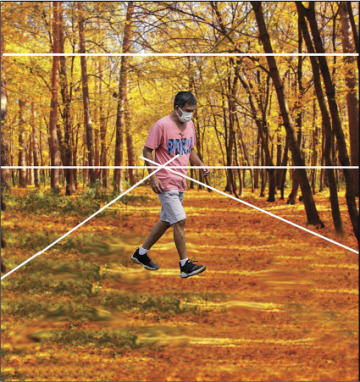
FIGURE 8.10 A file placed in the target composite image.
Scaling Images
The next task is to scale and place the image in position. You can’t use filters in the Filter menu or menu commands in the Enhance menu on a Smart Object. Therefore, you need to spend time deciding precisely what scaling you want for the photo. After scaling an image, you need to rasterize the layer by choosing Simplify Layer in the Layers panel menu.
In my example, I know the horizon line for the placed image is slightly above the subject’s head. The horizon line is identified in the target image; therefore, I first need to move the placed image’s horizon line so it matches with the target image’s horizon line. When the placement looks good, press Ctrl/ + T to scale the image. Press Alt/Option + Shift and drag a corner handle to size the photo. When you use Alt/Option, the photo scales up or down while maintaining the placement on the horizon line. Pressing the Shift key constrains the sizing proportionately. In Figure 8.11, you can see the final scaling of the photo I placed in my target composite image. Compare Figure 8.10 with Figure 8.11. The subject looks more natural in respect to walking on the ground rather than floating above the ground.
+ T to scale the image. Press Alt/Option + Shift and drag a corner handle to size the photo. When you use Alt/Option, the photo scales up or down while maintaining the placement on the horizon line. Pressing the Shift key constrains the sizing proportionately. In Figure 8.11, you can see the final scaling of the photo I placed in my target composite image. Compare Figure 8.10 with Figure 8.11. The subject looks more natural in respect to walking on the ground rather than floating above the ground.
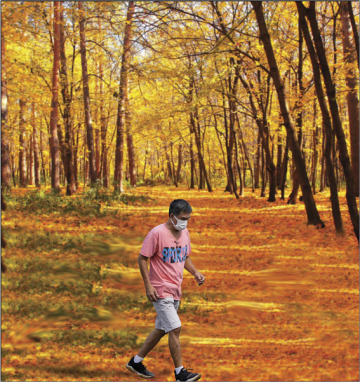
FIGURE 8.11 Drag a handle to scale a photo while maintaining the placement.
At this point, you can hide the lines layer and begin to work on brightness/contrast and color matching. You also could look at creating a little shadow at the subject’s feet and even a shadow for the figure, but I don’t go into that detail here.
